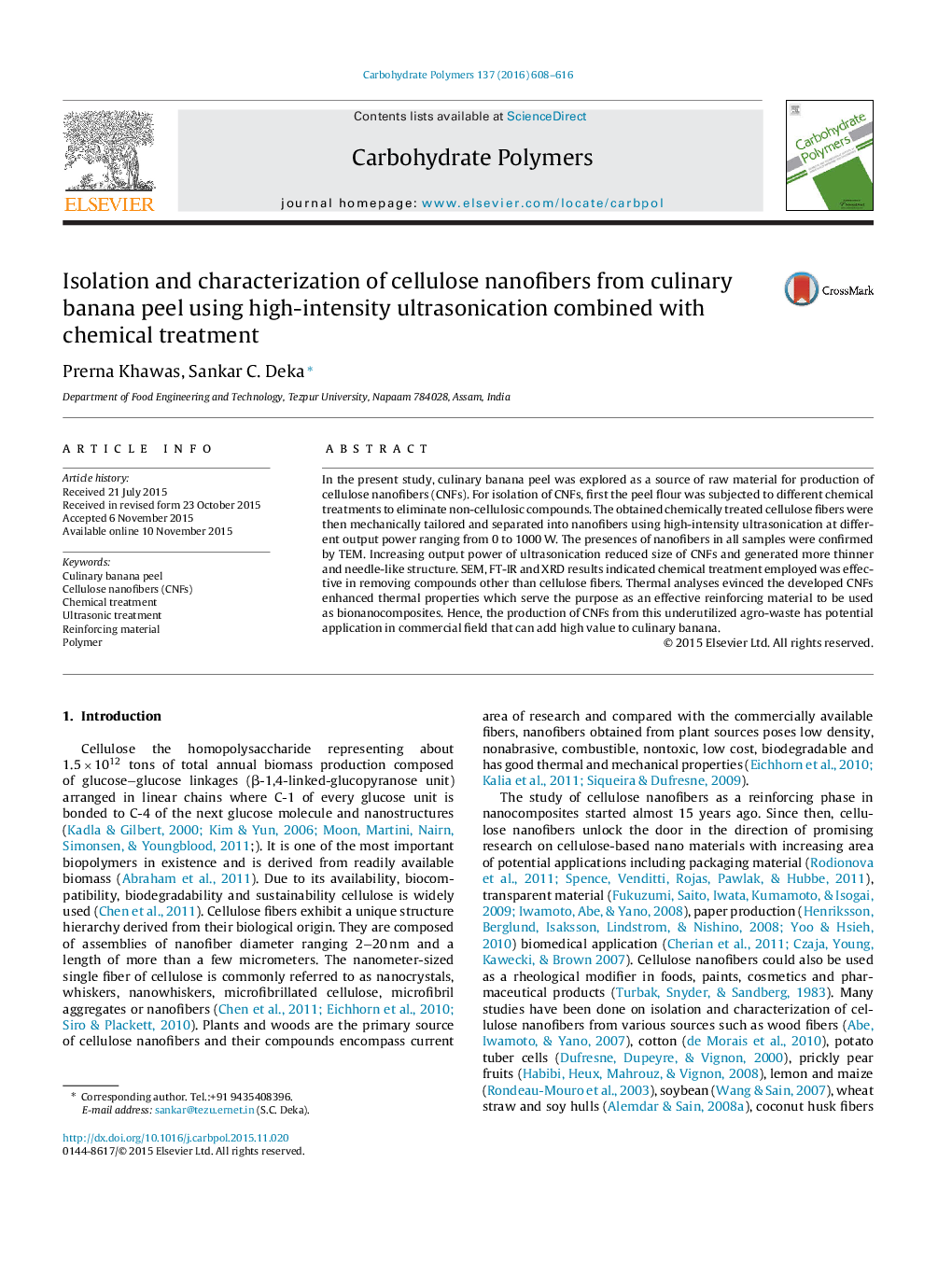| Article ID | Journal | Published Year | Pages | File Type |
|---|---|---|---|---|
| 1383205 | Carbohydrate Polymers | 2016 | 9 Pages |
•Culinary banana peel an agro-waste is available in abundance but possess limited value.•An abundant source of cellulose it deserves to be utilized in a proper and better way.•The study explored this agro-waste as a source of raw material for production of CNFs.•TEM, SEM, FT-IR, XRD, TGA confirmed presence of CNFs with enhanced thermal properties.•CNFs from this underutilized agro-waste have potential application in commercial field.
In the present study, culinary banana peel was explored as a source of raw material for production of cellulose nanofibers (CNFs). For isolation of CNFs, first the peel flour was subjected to different chemical treatments to eliminate non-cellulosic compounds. The obtained chemically treated cellulose fibers were then mechanically tailored and separated into nanofibers using high-intensity ultrasonication at different output power ranging from 0 to 1000 W. The presences of nanofibers in all samples were confirmed by TEM. Increasing output power of ultrasonication reduced size of CNFs and generated more thinner and needle-like structure. SEM, FT-IR and XRD results indicated chemical treatment employed was effective in removing compounds other than cellulose fibers. Thermal analyses evinced the developed CNFs enhanced thermal properties which serve the purpose as an effective reinforcing material to be used as bionanocomposites. Hence, the production of CNFs from this underutilized agro-waste has potential application in commercial field that can add high value to culinary banana.
